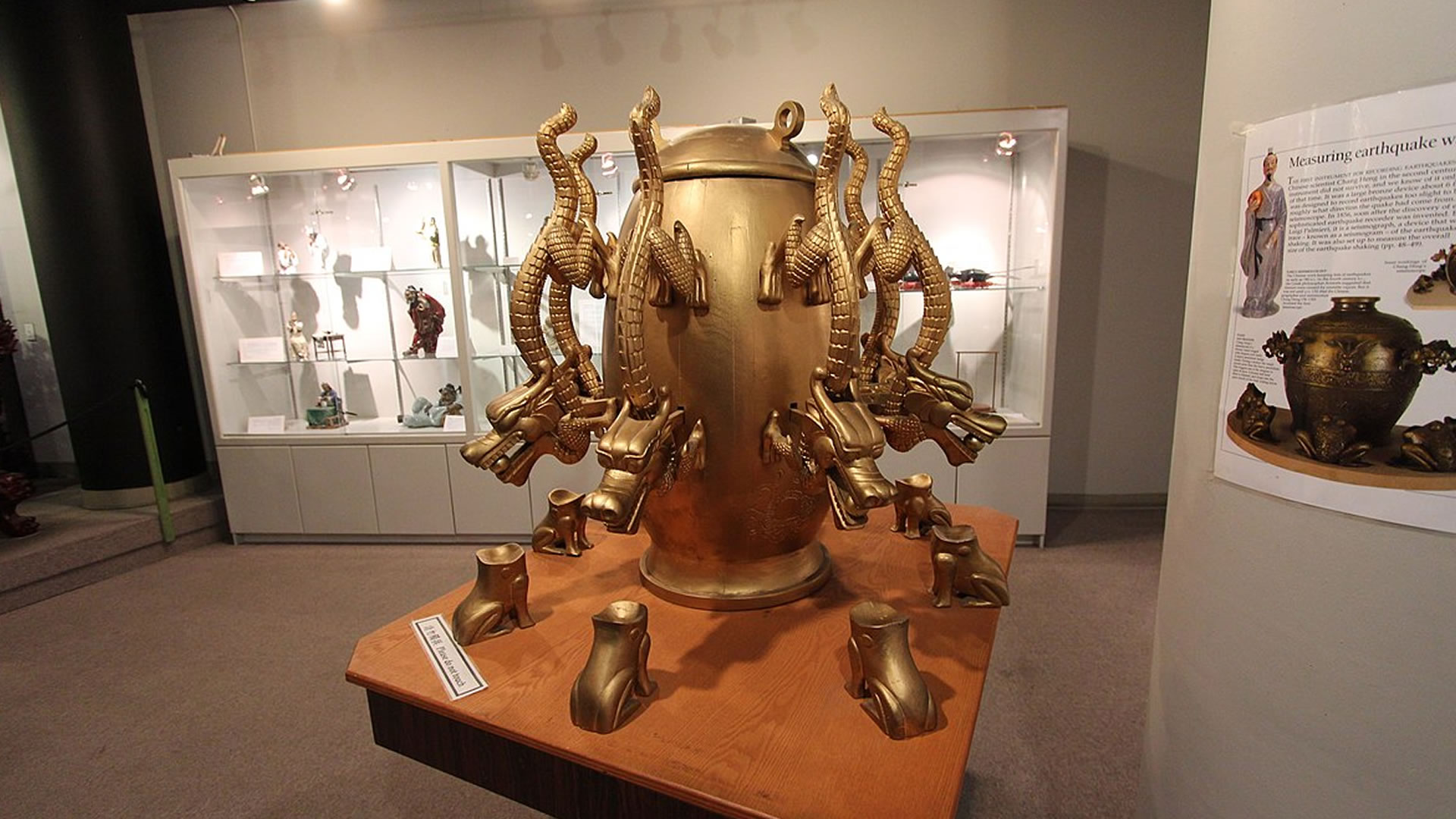Science
Chinese Scientists Aim to Revive 2,000-Year-Old Earthquake Sensor

Chinese researchers are working to recreate a sophisticated version of an ancient earthquake sensor believed to have been invented nearly 2,000 years ago. The original device, known as the Houfeng Didong Yi, was reportedly created in 132 AD by the renowned polymath Zhang Heng. This device is often regarded as the world’s first dedicated seismoscope, although its existence has been challenged by modern scholars.
The Houfeng Didong Yi, which translates to “instrument for measuring seasonal winds and Earth’s motion,” was designed as a bronze jar featuring eight dragons, each facing one of the compass directions. According to legend, when an earthquake occurred, the dragon facing the quake’s direction would drop a ball into the mouth of a toad positioned below, serving as an ancient directional indicator. Despite its historical acclaim, many contemporary experts have dismissed the device as myth, leading to its removal from Chinese textbooks in 2017.
Modern Reconstruction of Ancient Technology
In a bid to validate this historical claim, researcher Xu Guodong from the Institute of Disaster Prevention has re-examined ancient texts and is working on a realistic reconstruction using modern seismic science and engineering principles. His new model incorporates a central pendulum that swings during seismic events, activating an L-shaped lever system. This system transfers the pendulum’s movement to release one of the dragon’s balls while preventing others from dropping, ensuring accurate directional representation.
Xu’s innovative device is designed to detect ground movement as small as 0.5 mm. By amplifying ground vibrations through the pendulum, it enhances sensitivity to tremors. While it may not pinpoint the exact epicenter of an earthquake, it offers reliable directional indicators under certain conditions.
Historical records suggest that the original device was operational and effective. Notably, a documented event from 138 AD indicates that the seismoscope detected an earthquake occurring 528 miles (850 km) away, well before any noticeable effects reached the capital, Luoyang. Following the introduction of the device, records show a significant increase in earthquake documentation in the city.
Restoring Lost Knowledge and Legacy
The original device and its schematics have been lost to history. Xu attributes this loss to historical turmoil and conflict, which may have led to the device being hidden or destroyed by powerful noble families. He emphasizes the significance of the Houfeng Didong Yi, stating, “In Chinese history, only two bronzes were ever deified: the Xia dynasty’s Nine Tripod Cauldrons and this – a testament to its extraordinary historical significance.”
In their efforts to revive this ancient technology, Xu’s team plans to reconstruct the device using traditional methods and materials from the Han dynasty. This project aims to restore a vital piece of scientific history while recognizing China’s early contributions to seismic science, predating Western advancements by over 1,700 years. The successful completion of this endeavor could not only validate historical claims but also inspire further research into ancient technologies.
-

 Technology5 months ago
Technology5 months agoDiscover the Top 10 Calorie Counting Apps of 2025
-

 Health2 months ago
Health2 months agoBella Hadid Shares Health Update After Treatment for Lyme Disease
-

 Health3 months ago
Health3 months agoErin Bates Shares Recovery Update Following Sepsis Complications
-

 Technology4 months ago
Technology4 months agoDiscover How to Reverse Image Search Using ChatGPT Effortlessly
-

 Technology1 month ago
Technology1 month agoDiscover 2025’s Top GPUs for Exceptional 4K Gaming Performance
-

 Technology2 months ago
Technology2 months agoElectric Moto Influencer Surronster Arrested in Tijuana
-

 Technology5 months ago
Technology5 months agoMeta Initiates $60B AI Data Center Expansion, Starting in Ohio
-

 Technology5 months ago
Technology5 months agoRecovering a Suspended TikTok Account: A Step-by-Step Guide
-

 Health4 months ago
Health4 months agoTested: Rab Firewall Mountain Jacket Survives Harsh Conditions
-

 Lifestyle5 months ago
Lifestyle5 months agoBelton Family Reunites After Daughter Survives Hill Country Floods
-

 Technology4 months ago
Technology4 months agoHarmonic Launches AI Chatbot App to Transform Mathematical Reasoning
-

 Technology3 months ago
Technology3 months agoUncovering the Top Five Most Challenging Motorcycles to Ride









